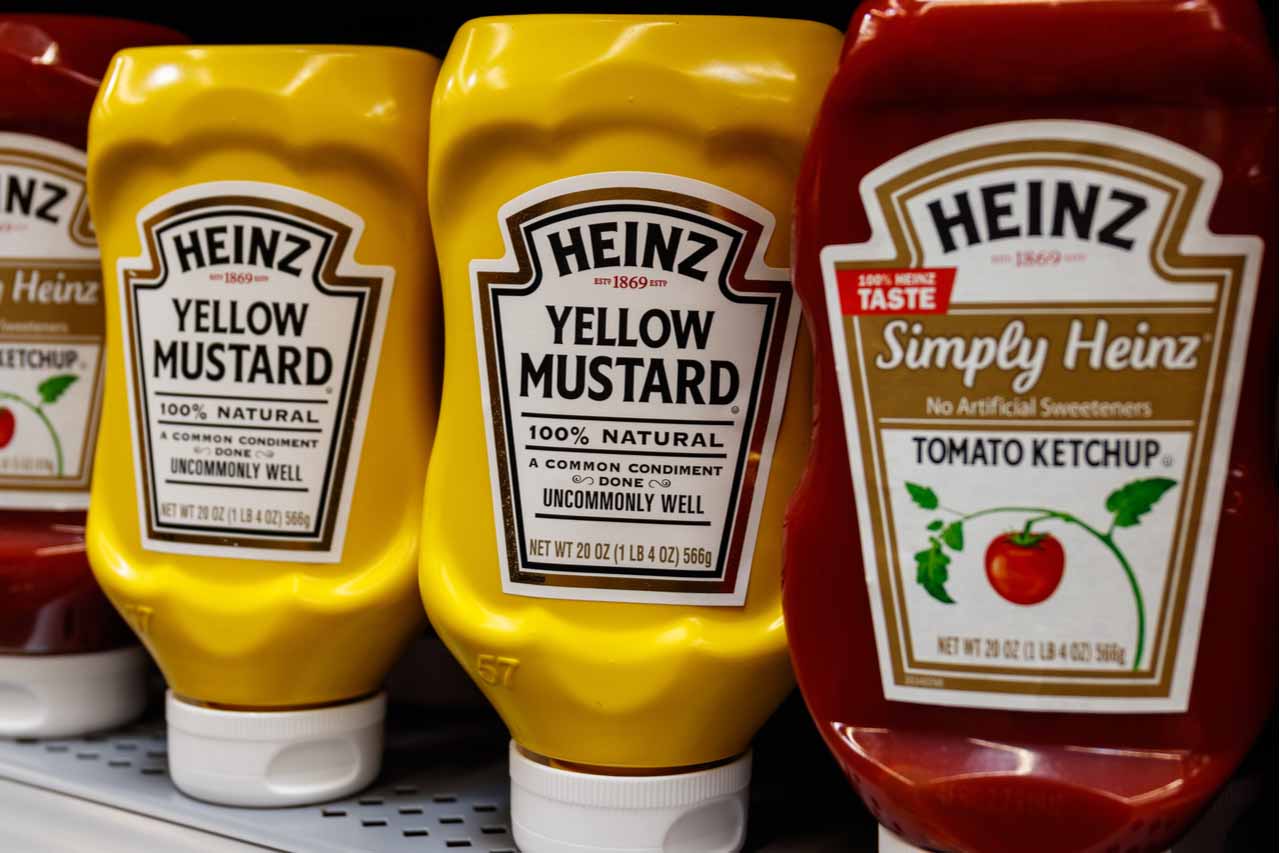
On top of its virgin plastic reduction goal, Kraft Heinz is working to eliminate unnecessary plastic and support reuse models. | Jonathan Weiss/Shutterstock
If Kraft Heinz achieves a recently announced goal, containers for staple summer condiments such as Heinz ketchup will contain significantly less virgin plastic by 2030.
Kraft Heinz announced on Monday its intent to reduce the amount of virgin plastic used in its global packaging portfolio by 20% by 2030. The company estimates that reduction will amount to about 100 million pounds or 50,000 tons of virgin plastic.
To hit this target, the food and beverage giant will increase the use of recycled resin, lightweight some of its packaging, and in some cases use different materials altogether.
For example, Heinz has already reached 30% recycled content in most of its bottles in Brazil, the U.K. and Europe, and the plastic shaker bag has been removed from Shake ‘N Bake boxes. In the U.K., Heinz has also replaced plastic shrink-wrap with a multipack paperboard sleeve.
The virgin plastic target builds on the company’s other sustainability goals, which include transitioning to 100% recyclable, reusable or compostable packaging by 2025 and including 15% PCR in its U.S. PET rigid plastic packaging by that same year.
Kraft Real Mayo and Miracle Whip packaging will also be transitioned to 100% recycled content in the U.S. starting in 2024, the press release noted.
Rashida La Lande, executive vice president, global general counsel and chief sustainability and corporate affairs officer at Kraft Heinz, said in a press release that change is necessary to reach the company’s goals.
“We can’t continue to do things as we have in the past,” La Lande said. “We are investing in innovative technologies and partnerships that are critical to helping us redesign packaging, eliminate unnecessary plastic, increase our use of recycled content and influence the adoption of reuse models.”
More stories about brand owners
- Retailers launch CA campaign to ditch single-use bags
- New report explores the future of CPG packaging goals
- Unifi pushes for textile recycling progress